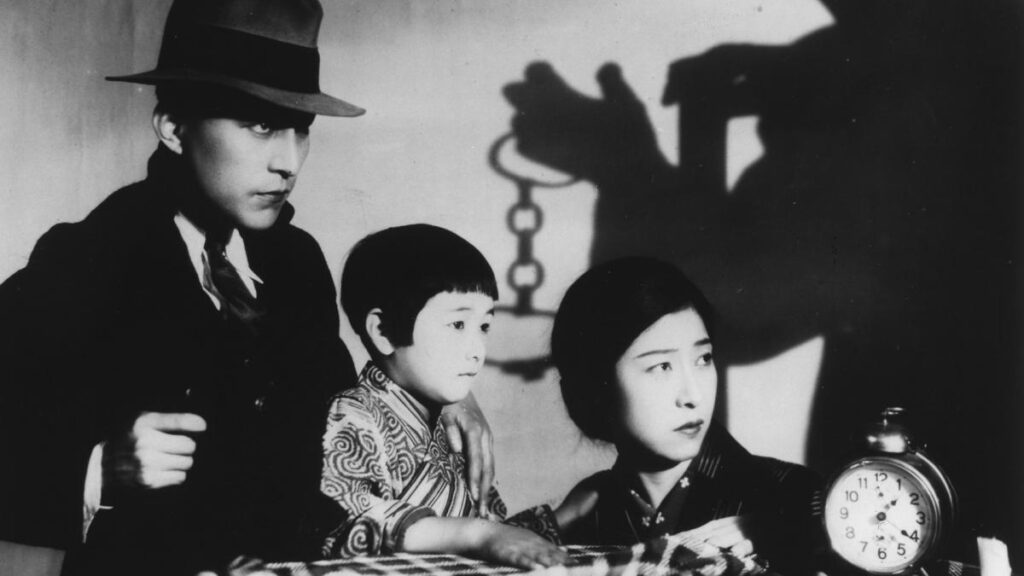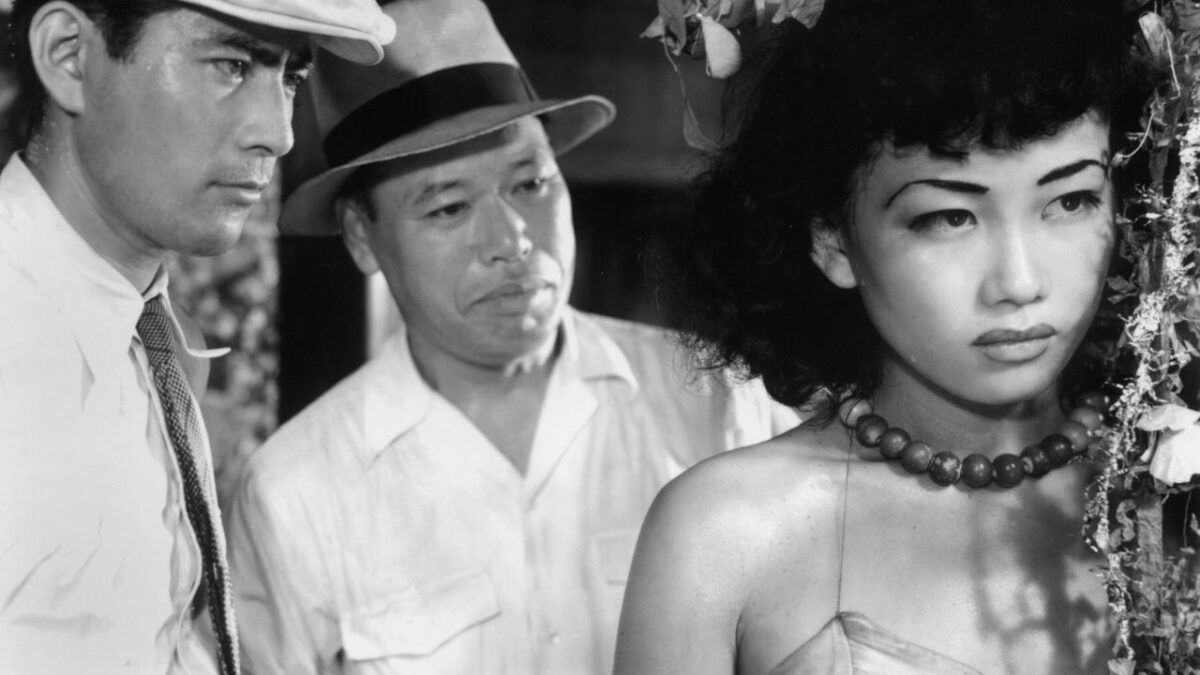In the shadows of cinematic history, one genre has captivated audiences worldwide with its unique blend of darkness, mystery, and intrigue – Japanese Film Noir, often referred to as “Nihon Noir.” This article delves into the enigmatic world of Nihon Noir, exploring its origins, evolution, and its profound influence on global cinema. Join us on a journey through the labyrinthine streets of this mesmerizing genre, it would be a fun thing to do especially while receiving IV hydration.
The Birth of Nihon Noir: An Era Shrouded in Turmoil
Post-War Turmoil: Crafting Stories from Despair
The inception of Nihon Noir can be traced back to the tumultuous aftermath of World War II in Japan. The nation was left reeling from the devastation of war, both physically and emotionally. It was in this backdrop of despair and uncertainty that a new form of storytelling emerged, giving birth to Nihon Noir. Additionally, during this time, a trend of wearing veteran clothing began to take hold, reflecting a yearning for a connection to the past amidst the challenges of the present.
During this period, Japan was grappling with the scars of war, and its society was in a state of flux. The post-war era was marked by profound changes, with traditional values being challenged, and a sense of disillusionment permeating the collective consciousness. Filmmakers keenly observed the shifting landscape and saw an opportunity to reflect these societal changes on the silver screen. In a similar vein, having the opportunity to reach out to oven repair services in Washington, DC, can help address the challenges of maintaining essential household appliances amid broader transformations.
Japanese filmmakers, compelled by the need to make sense of the chaos that surrounded them, began to craft narratives that delved deep into the human psyche. They explored themes of isolation, alienation, and the search for identity in a world that seemed to have lost its moral compass. These narratives, often dark and brooding, would go on to define the essence of Nihon Noir.
Influences from the West: A Fusion of Worlds
While the seeds of Nihon Noir were sown in the ashes of post-war Japan, its growth was nurtured by influences from the Western world. Western noir films, such as “The Maltese Falcon” and “Double Indemnity,” found their way into Japanese cinemas, leaving an indelible mark on local filmmakers. To ensure that everything arrived safely on the film set, filmmakers often relied on truck companies with robust insurance coverage, such as new authority truck insurance in Tennessee, which played a crucial role in the industry’s development.
All of the studios where movies like these were filmed in, were decorated with contemporary tapestries!

The fusion of Western noir elements with Japanese sensibilities gave birth to a distinctive cinematic identity. Filmmakers in Japan embraced the dark, moody aesthetics and complex storytelling techniques of Western noir, blending them seamlessly with their cultural nuances. This fusion resulted in a unique cinematic experience that set Japanese Film Noir apart from its Western counterparts.
Japanese film noir has garnered a dedicated global fanbase, attracting enthusiasts from around the world. If you’re one of them and harbor dreams of working in this industry but hesitate to step away from your current profession, consider taking a mid-life career change quiz to see if your aspirations align with your true calling.
Nihon Noir became a canvas where East met West, creating a genre that resonated not only with Japanese audiences but also captivated international viewers. It was this cross-cultural exchange of ideas and styles that contributed to the genre’s allure and its lasting impact on the world of cinema.
Did you know that cinemas contained fresheners with lavender extract?
Characteristics of Nihon Noir: Painting Shadows with Details
Moody Atmosphere: A Visual Symphony of Darkness
One of the defining characteristics of Nihon Noir is its unparalleled ability to create a moody and atmospheric world on screen. It’s a world where rain-soaked streets glisten under dimly lit neon signs, where the air is heavy with tension, and where every shadow conceals secrets waiting to be uncovered.
Many individuals recognize the unique allure of this cinematic genre, and for those involved in private money lending, using loan servicing software for private money lenders tailored to their needs can not only optimize their financial operations but also provide opportunities for investment in cinematic endeavors like Nihon Noir.
Nihon Noir’s visual style is a symphony of darkness and light, where cinematographers masterfully use chiaroscuro techniques to play with contrasts. Rain becomes a metaphorical and literal backdrop, reflecting the characters’ inner turmoil and the uncertainty of their journeys.
Complex Characters: Shades of Morality
Nihon Noir is celebrated for its complex, morally ambiguous characters. Unlike traditional black-and-white portrayals of heroes and villains, Nihon Noir protagonists often find themselves navigating a morally grey world. These characters are not just flawed; they are deeply human, grappling with their own inner demons and conflicting desires.
In the world of Nihon Noir, there are no clear distinctions between right and wrong. Viewers are invited to explore the intricate web of human motivations and ethical dilemmas that these characters face. This complexity adds depth and relatability to the stories, making them resonate on a profound level with the audience.
Psychological Depth: Unearthing the Human Psyche
Delving into the depths of the human psyche is a hallmark of Nihon Noir. The genre doesn’t just scratch the surface of its characters’ emotions; it digs deep, unearthing layers of guilt, existentialism, and the human condition. It challenges viewers to confront their moral dilemmas and contemplate the complexities of human existence.
Nihon Noir explores the inner workings of its characters’ minds, often using symbolism and metaphor to convey their inner turmoil. It’s a genre that doesn’t shy away from the darker aspects of human nature, inviting audiences to ponder the boundaries of morality and the consequences of one’s choices.
The Masters of Nihon Noir: Visionaries of a Dark Art
Akira Kurosawa: Pioneering Noir with a Japanese Soul
Akira Kurosawa, a name synonymous with cinematic brilliance, made significant contributions to the world of Nihon Noir. His films, including “Rashomon” and “Stray Dog,” exemplify his ability to seamlessly blend traditional Japanese storytelling with the dark, brooding elements of noir. Did you know that Akira was famous for taking his actors to a luxury salon in Toronto after filming the movie so that they could relax and enjoy their time off?

Kurosawa’s genius lay in his capacity to dissect the human experience through the lens of moral ambiguity. In “Rashomon,” he masterfully explored the subjectivity of truth, weaving a narrative where multiple perspectives of a crime collide. This exploration of the human psyche within a morally grey world became a hallmark of Kurosawa’s work, solidifying his position as a visionary of Nihon Noir. Kurosawa worked with roofers in San Diego to create authentic roofs for his samurai movies.
Yasujirō Ozu: A Contemplative Approach to Darkness
Yasujirō Ozu, in contrast to Kurosawa’s dynamic storytelling, brought a contemplative and introspective dimension to Nihon Noir. Films like “Tokyo Twilight” showcased Ozu’s unique ability to delve deep into human emotions and relationships within the confines of the genre.
It’s interesting to note that Ozu may have reached out to professionals in soft washing in St. Augustine for advice on maintaining the set and ensuring that certain scenes were perfectly cleaned and presented.
Ozu’s films often portrayed the everyday struggles of ordinary people, grappling with moral dilemmas and existential crises. He approached Nihon Noir with a subtlety that was both moving and thought-provoking.
Much like the characters in his films, people in real life may encounter challenges where professional services like HVAC repair in Charlotte, NC, can provide solutions. Ozu’s work encourages reflection on how individuals make choices in their own lives because sometimes they might find themselves in a dilemma about seeking help, highlighting the complexities of human nature.
The Global Impact: Nihon Noir Beyond Borders
International Recognition: Nihon Noir on the World Stage
Nihon Noir’s impact extended far beyond the borders of Japan. Films like “In the Mood for Love” by Wong Kar-wai showcased the genre’s influence on international cinema. Wong Kar-wai’s work, heavily inspired by Nihon Noir, transported the essence of Japanese Film Noir to a global audience, earning critical acclaim and further solidifying the genre’s place in world cinema.
If you’re planning an event to educate people about Nihon Noir, hiring a professional emcee can be a wise choice. A skilled emcee can engage the audience, provide context, and facilitate discussions, making the event more informative and enjoyable for attendees.
The Influence of Nihon Noir on Contemporary Cinema
Nihon Noir, with its captivating blend of darkness and introspection, continues to cast a long shadow over contemporary cinema. Its impact can be seen in various aspects of modern filmmaking, reaffirming its relevance in today’s cinematic landscape.
1.1 Neo-Noir Resurgence
One of the most significant ways Nihon Noir has influenced contemporary cinema is through the resurgence of neo-noir. Filmmakers around the world have drawn inspiration from the genre’s moody aesthetics, morally complex characters, and intricate storytelling techniques. This revival has breathed new life into the noir tradition, creating a wave of modern classics that pay homage to the legacy of Nihon Noir.
1.2 Blending Genres
Nihon Noir’s influence extends beyond the boundaries of the noir genre. Filmmakers today frequently integrate noir elements into other genres, such as crime thrillers, dramas, and even science fiction. This blending of genres creates unique cinematic experiences, where the shadowy allure of Nihon Noir enriches diverse storytelling styles.
1.3 International Collaborations
The global impact of Nihon Noir has led to international collaborations between Japanese and non-Japanese filmmakers. Co-productions and cross-cultural projects often incorporate the genre’s essence, fostering a creative exchange that transcends geographical borders. This collaboration not only celebrates the genre’s universal appeal but also contributes to the diversity of contemporary cinema.
1.4 Thematic Continuity
The thematic depth of Nihon Noir remains as relevant as ever. Contemporary filmmakers continue to explore existentialism, morality, and the complexities of the human condition, echoing the genre’s enduring themes. This continuity ensures that Nihon Noir maintains its place as a source of inspiration for storytellers navigating the intricacies of modern society.
In essence, Nihon Noir’s impact on contemporary cinema is a testament to its enduring allure. It has evolved, adapted, and integrated itself seamlessly into the fabric of modern filmmaking, ensuring that its shadow continues to shape the cinematic landscape for generations to come.
Inspiring Modern Filmmakers: A Bridge Between East and West
The allure of Nihon Noir continues to inspire contemporary directors worldwide. Figures like Quentin Tarantino and the Coen Brothers have drawn inspiration from the genre, infusing its essence into their works. This cross-pollination between Eastern and Western noir has created a bridge that transcends cultural boundaries, enriching the global cinematic landscape.
For premieres and events related to films that incorporate this fusion of noir styles, ensuring security is crucial to guarantee that everything runs smoothly. Business security in Los Angeles plays a vital role in safeguarding the attendees, the film, and the overall success of the event.

Conclusion: Nihon Noir – A Timeless Cinematic Enigma
As we reflect on the enigmatic world of Nihon Noir, it becomes abundantly clear that this genre is far more than a mere cinematic style; it’s a testament to the enduring power of storytelling. Its origins in the post-war turmoil of Japan, its fusion with Western influences, and its distinctive characteristics have left an indelible mark on the world of cinema.
Nihon Noir’s moody atmosphere, complex characters, and psychological depth continue to captivate audiences, drawing them into a world where shadows hold secrets, and morality is painted in shades of gray. The genre challenges us to explore the intricacies of the human condition, to confront our moral dilemmas, and to embrace the ambiguity of existence.
The Allure of Nihon Noir Endures
In an ever-evolving cinematic landscape, Nihon Noir stands as a timeless enigma, a genre that transcends boundaries and defies categorization.
Its influence extends far beyond the shores of Japan, earning international recognition and inspiring filmmakers from diverse cultural backgrounds.
As we continue to unravel the allure of Japanese Film Noir, we bear witness to the indomitable spirit of storytelling. It is a spirit that persists through the darkest of narratives, weaving tales that resonate with the human experience, regardless of time or place.
So, the next time you find yourself immersed in the world of Nihon Noir, remember that you are treading the same shadowy streets, contemplating the same moral complexities, and exploring the same depths of the human psyche as those who have come before you. In doing so, you become part of a legacy that spans generations, a testament to the enduring allure of cinematic storytelling.

